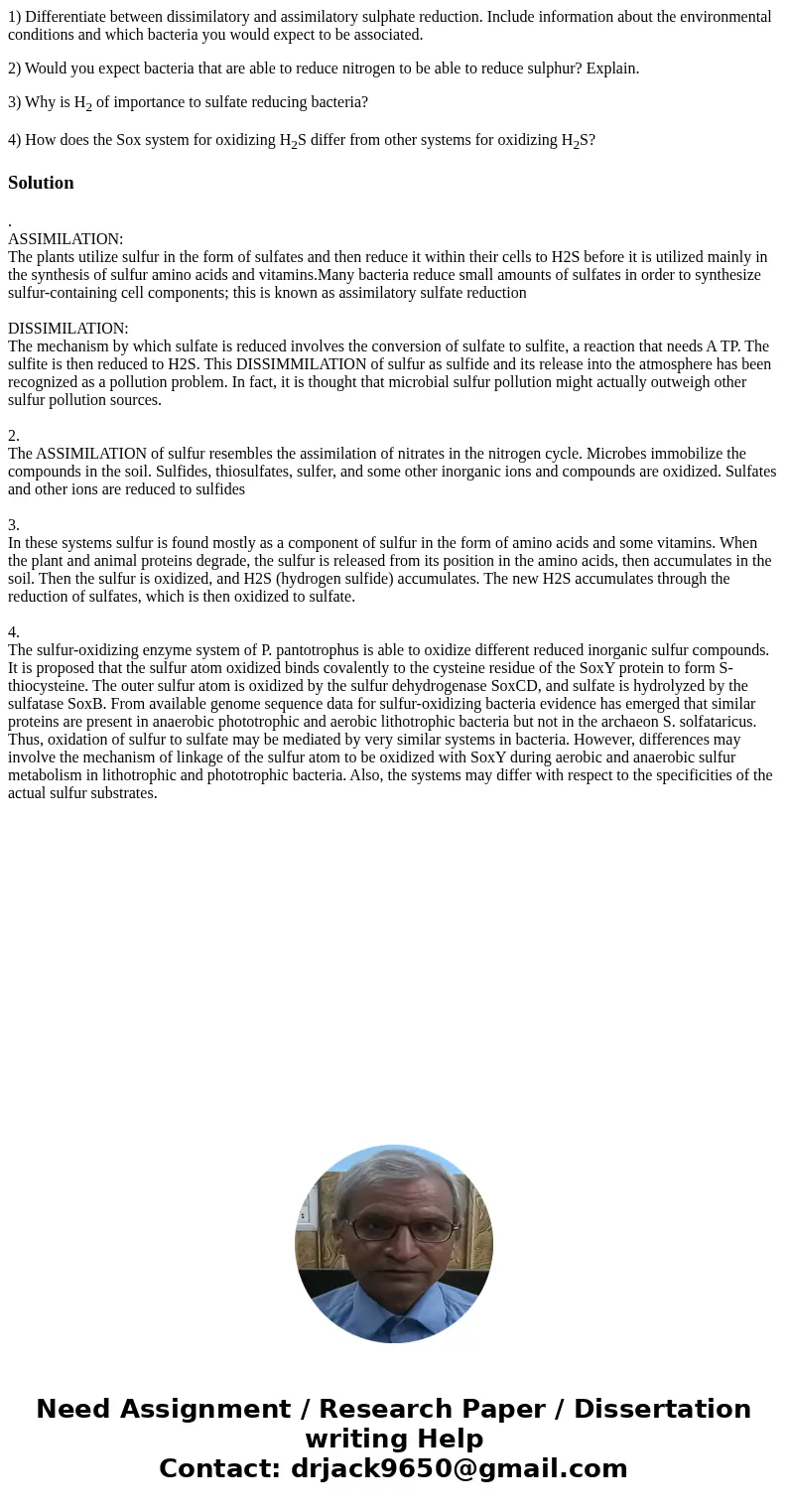1 Differentiate between dissimilatory and assimilatory sulph
1) Differentiate between dissimilatory and assimilatory sulphate reduction. Include information about the environmental conditions and which bacteria you would expect to be associated.
2) Would you expect bacteria that are able to reduce nitrogen to be able to reduce sulphur? Explain.
3) Why is H2 of importance to sulfate reducing bacteria?
4) How does the Sox system for oxidizing H2S differ from other systems for oxidizing H2S?
Solution
.
ASSIMILATION:
The plants utilize sulfur in the form of sulfates and then reduce it within their cells to H2S before it is utilized mainly in the synthesis of sulfur amino acids and vitamins.Many bacteria reduce small amounts of sulfates in order to synthesize sulfur-containing cell components; this is known as assimilatory sulfate reduction
DISSIMILATION:
The mechanism by which sulfate is reduced involves the conversion of sulfate to sulfite, a reaction that needs A TP. The sulfite is then reduced to H2S. This DISSIMMILATION of sulfur as sulfide and its release into the atmosphere has been recognized as a pollution problem. In fact, it is thought that microbial sulfur pollution might actually outweigh other sulfur pollution sources.
2.
The ASSIMILATION of sulfur resembles the assimilation of nitrates in the nitrogen cycle. Microbes immobilize the compounds in the soil. Sulfides, thiosulfates, sulfer, and some other inorganic ions and compounds are oxidized. Sulfates and other ions are reduced to sulfides
3.
In these systems sulfur is found mostly as a component of sulfur in the form of amino acids and some vitamins. When the plant and animal proteins degrade, the sulfur is released from its position in the amino acids, then accumulates in the soil. Then the sulfur is oxidized, and H2S (hydrogen sulfide) accumulates. The new H2S accumulates through the reduction of sulfates, which is then oxidized to sulfate.
4.
The sulfur-oxidizing enzyme system of P. pantotrophus is able to oxidize different reduced inorganic sulfur compounds. It is proposed that the sulfur atom oxidized binds covalently to the cysteine residue of the SoxY protein to form S-thiocysteine. The outer sulfur atom is oxidized by the sulfur dehydrogenase SoxCD, and sulfate is hydrolyzed by the sulfatase SoxB. From available genome sequence data for sulfur-oxidizing bacteria evidence has emerged that similar proteins are present in anaerobic phototrophic and aerobic lithotrophic bacteria but not in the archaeon S. solfataricus. Thus, oxidation of sulfur to sulfate may be mediated by very similar systems in bacteria. However, differences may involve the mechanism of linkage of the sulfur atom to be oxidized with SoxY during aerobic and anaerobic sulfur metabolism in lithotrophic and phototrophic bacteria. Also, the systems may differ with respect to the specificities of the actual sulfur substrates.

 Homework Sourse
Homework Sourse